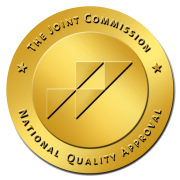Brain Scans Can Predict Which Alcoholics Are Most Likely to Relapse
By Maia Szalavitz May 02, 2013

Getty Images/Flickr RF / Getty Images/Flickr RF
For any addiction, external cues and stress can trigger cravings that are hard to resist, and the latest research points to an area of the brain that might be responsible for sabotaging recovery.
The study, which was published in JAMA Psychiatry, found that those with elevated activity in a region called the ventromedial prefrontal cortex (vmPFC) even while they were at rest were eight times more likely to drink again within 90 days than those whose vmPFC was calmer when they were feeling relaxed.
The findings are “a major contribution,” to understanding alcohol addiction, said Dr. Nora Volkow, director of the National Institute on Drug Abuse, in a co-written editorial that accompanied the research.
The authors, led by Rajita Sinha, professor of psychiatry at Yale University, studied the brain activity of 45 recovering alcoholics who were in a treatment program based on the 12 steps of Alcoholics Anonymous, during three different experiences — a stressful one, one that enticed them to drink, and a neutral, relaxing situation. The scientists compared their brain activity patterns to those of 30 social drinkers of similar age, intelligence and gender. The participants in the rehabilitation program were abstinent for four to eight weeks.
In order to generate the three experiences, the researchers asked all of the participants to describe recent stressful events, situations in which they ended up drinking, and circumstances that helped them to feel relaxed (such as sitting on a beach and listening to the waves). These were compiled into personalized two-minute videos that the team played back to the volunteers while they were brains were scanned using functional MRI. The scenarios induced the desired emotional states; heart rates rose during the stressful experiences and fell during the more relaxing ones.
But while the alcoholics appeared to be relaxed while picturing themselves on sunlit beaches, their brains — specifically the vmPFC — told a different story. “With relaxation, social drinkers relax their prefrontal cortex. It’s deactivation,” says Sinha, “For the alcoholic brain, what we found in this region was hyperactivity, as if it were stuck and primed and ready to go.” The alcoholics also showed elevated activity in an area linked with craving reward and pleasure even while they were relaxed.
Under stress, these regions also looked very different in the two groups. “[The stress response in] social drinkers goes up and responds as [it] needs to do when faced with a challenge: you want the system regulated to get ready for stress and to calm down afterwards. In the alcoholic brain, that [response] was flat or blunted,” Sinha says.
The discrepancy suggests that a more sensitive or active vmPFC could be making alcoholics vulnerable to drinking cues or to seeking out the satisfaction that comes from alcohol – a set-up for relapse. “The most important finding is the identification of a functional disruption in the brain that predicts who is most at risk for relapse,” Sinha says.
The vmPFC and the reward circuit are key nodes in the neural network that guides decision-making. These regions help to add value to experiences, allowing the brain to determine whether they will be helpful or harmful, punishing or pleasant. “[Activity in these areas is] important in predicting what’s important and what’s not,” says Sinha, explaining that stimulating these circuits alerts other regions in the brain about how to respond once values are set. In the case of addictions, the heightened activity in these areas may bias the system to see the drugs or alcohol as more important than anything else.
“If it’s not working, and petered out like we’re showing [in the alcoholics], then other areas of brain like [those that control your] automatic response under stress are likely to override everything else,” she adds. For alcoholics, not surprisingly, this automatic response would be to drink to satisfy cravings and respond to stress.
The findings may dovetail with the results from another study, published in the same issue of JAMA Psychiatry, that explored another key factor in alcoholic drinking: counteracting unpleasant moods.
Among more than 40,000 adults participating in the National Survey on Alcohol and Related Conditions, the researchers found that those who drank to lift their spirits tripled their risk of alcoholism, as well as prolonging the disorder. The study estimated that nearly one-third of persistent alcoholism is linked to such self-medication, as well as 12% of new cases.
Both studies suggest potentially more sophisticated ways of addressing alcoholism by focusing on the stress and cues that can drive excessive drinking. In Sinha’s research, for example, the relapse rate overall was 71%— and it was even higher in those with over-activity in the vmPFC during relaxation. New approaches, such as mindfulness meditation, which could potentially calm the hyperactive alcoholic brain, might be more effective than programs that focus solely on changing behavior. Sinha is also studying a medication called Prazocin, which could affect the activity of the vmPFC. With better prediction of who is most likely to relapse, she says, could come better prevention strategies that are better tailored to what is driving alcoholics to drink again.
Read more: http://healthland.time.com/2013/05/02/bran-scan-can-predict-return-to-drinking/#ixzz2Wgf1vqWF

